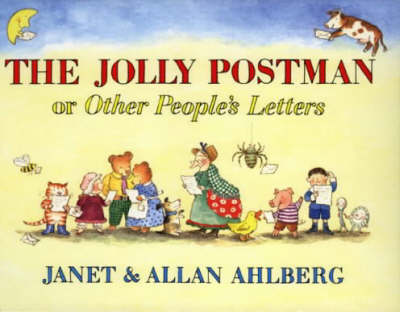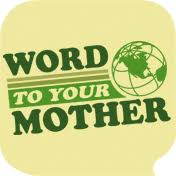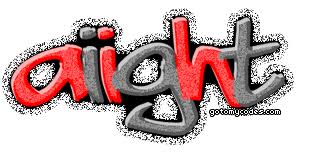
For many actors, the craft is all about range. Being able to assume and fully inhabit another character showcases their true talents. Not all actors, of course, have this magnitude of expertise. There's a reason some guys are always the action hero and some guys are always the off-the-wall one-line spouting goofball--that's just what they're good at.
In some of these cases, an actor manages to transition from one type to another seamlessly, effortlessly demonstrating their breadth of skill as an actor. For others...not so much. As a career move, accepting a role against type can significantly boost an actor's credibility and garner them major industry respect. If done well, it can mean an outpouring of positive critical response and a shot at a prestigious award.
On the other hand, audiences aren't always quick to warm to watching an action hero play an allegedly comically out-of-character housekeeper/nanny; sometimes it's just not enough if the premise itself is the film's strongest punchline. As a general rule, lighthearted actor taking on a serious role, good. Serious actor taking on a lighthearted role, bad.
Robin Williams: Good Will Hunting, Dead Poets Society, etc
While now we have seen Williams in a wide range of roles, his road to fame was paved with comedic roles stemming from the goofiness of his breakthrough Mork television character. Williams has proven himself several times over as a serious actor with depth, particularly for his Academy Award winning role as a psychologist in Good Will Hunting and as a teacher in Dead Poets Society. He broke free from his typecast slapstick persona with some distinctly emotional performances. He may have once been pigeonholed as a goofball comedian, but he has since assumed a number of roles that established him as an actor of range. Truthfully, though, more recent films like Old Dogs aren't helping maintain his reputation.
Jim Carrey: The Truman Show, Man in the Moon
Like Williams, Jim Carrey's breakthrough roles came mainly in the form of slapstick comedic characters. After rising to stardom with leads in comedies like Ace Ventura: Pet Detective, Dumb and Dumber and Liar, Liar, Carrey explored his subtler side with some decidedly more serious parts. He showed us his range in The Truman Show as an unknowing reality star in a makeshift reality. A year later, he cemented his more serious actor status with the title role in the Andy Kaufman biopic Man in the Moon. Despite critical speculation about potential Academy Award nominations, he was snubbed for both. Either way, he established himself as a more credible, multi-faceted actor.
Betty White and Rue McClanahan on Golden Girls
The original casting preference for The Golden Girls was Rue McClanahan as Rose and Betty White as Blanche, a parallel to the previous roles they had held on The Mary Tyler Moore Show and Maude respectively. Bea Arthur initially was not interested in the role of Dorothy, fearing that the new show would come off as Maude and Vivian meet Sue Ann Nivens. Once they switched the roles, though, the dynamic changed entirely. The casting feels so spot-on that it's hard to even imagine the women in roles others than the ones they accepted.
Fred Savage in the Lifetime Movie No One Would Tell
Kevin Arnold abusing and murdering DJ Tanner? It sounds like a stretch, but that's the way this Lifetime Movie of the Week played out. The made-for-TV movie is pretty cheesy, but it's since developed a cult following in reruns. Undoubtedly the unlikely casting choices accounts for the bulk for its appeal, but it's still a bit unnerving to watch the whole sordid ordeal unfold.
Elizabeth Berkley: Showgirls
Here is an ultimate case of seeking to play against type. In an effort to move away from her squeaky clean family-friendly image as Jessie Spano from Saved by the Bell, Elizabeth Berkley sought to break out of the typecasting box in a very major way. Berkley took on the role of Nomi Malone in the controversial NC-17 rated nudity-filled film Showgirls. The first movie to ever garner the NC-17 rating, Showgirls outlined Nomi's aspiration to rise from a stripper to showgirl on the Vegas dance scene. The movie is comically bad, belying its alleged dramatic themes with tragically poor performances and gratuitous amounts of nudity. The film was nearly universally panned by critics, failing to give Berkley the image boost she craved.
Sylvester Stallone in Stop! Or My Mom will Shoot!
This is one Sly probably wants to strike from his resume--er, IMDB page. It's just plain embarrassing. This comedy debacle costars Stallone and Golden Girls' Estelle Getty as a son and mother duo. Stallone still plays the tough guy cop, but one who the writers intended to be humorously undermined by his bumbling interfering mother. Somewhere along the way, this attempt at humor goes horribly, terribly wrong, leaving us with a remarkably unfunny comedy. The critical response was overwhelmingly poor as well, leaving the film with a notably low 5% positive rating on Rotten Tomatoes.
Arnold Schwarzenegger in Twins, Junior, Kindergarten Cop, and Jingle All the Way
Before Schwarzenegger transitioned from action hero/bodybuilder to California governor, he made a few lighthearted comedies. This man has a real knack for reinventing himself, transitioning easily from Austrian bodybuilder to action film star to comedy actor to politician. It's almost not fair to say he's acting against type; Arnold dictates his own type. Still, there's something uniquely comical about seeing the governor of California saying, "It is not a tumor!"
While not every actor can successfully make the transition from one type to another, it's nice to see him give it his best try. Whether he ends up with an Oscar nomination or is panned by critics for his abysmal out-of-character performance, it's nice to see the change of pace. In some cases, we end up with strong serious performance from actors with a reputation for silliness. In others, an embarrassing foray into the absurd.To be fair, it's much more fun to watch things crash and burn the second way. If you don't believe me, watch ten minutes of Stop! Or My Mom Will Shoot! You'll become a believer.























































